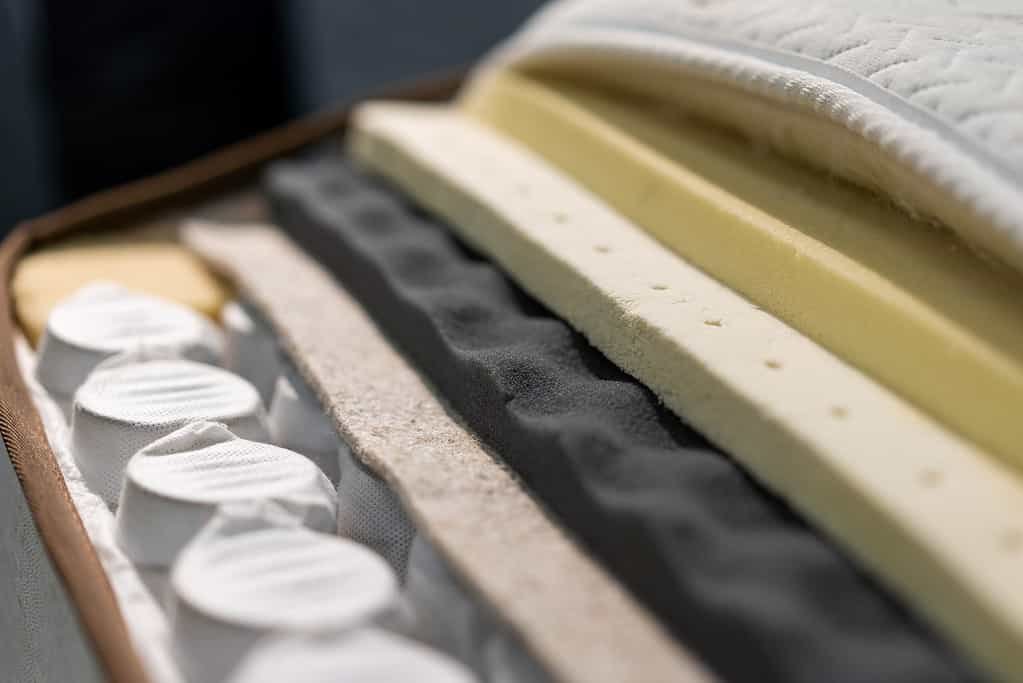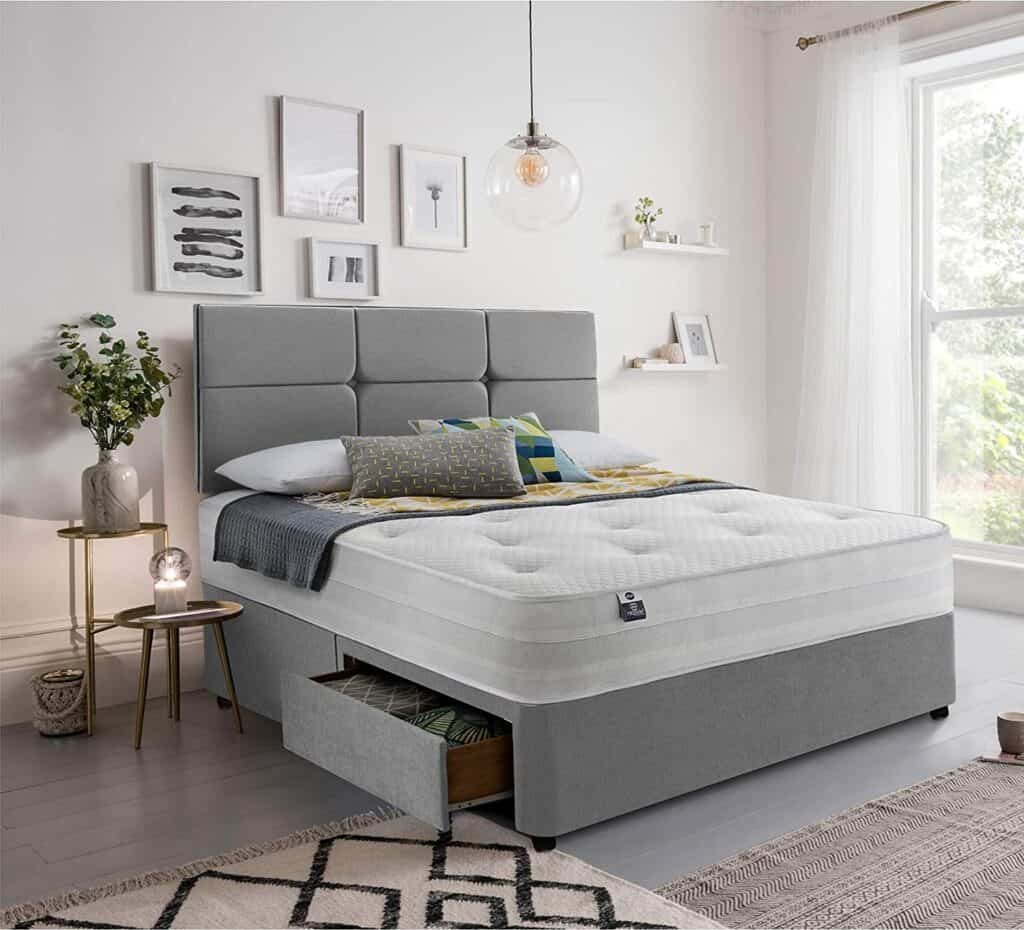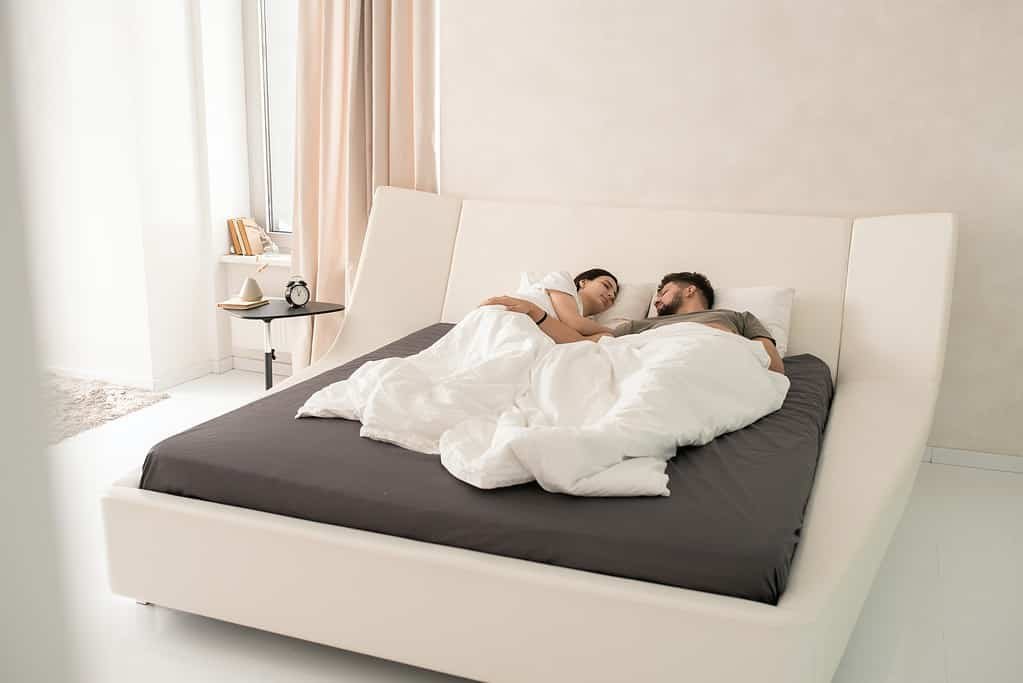Pocket Sprung Mattresses vs. Memory Foam: A Clear Guide
When it comes to selecting the best mattress, the choice between pocket-sprung mattresses and memory foam can be a difficult decision. Both mattress types offer unique features and benefits, catering to individual preferences and sleep needs. This article aims to concisely compare pocket-sprung and memory foam mattresses, helping you make an informed choice based on your requirements. Pocket-sprung mattresses are designed with individually wrapped coil systems stitched into the mattress layers. These independent coils enable contouring and pressure point relief compared to traditional interconnected innersprings. On the other hand, memory foam mattresses are composed of a viscoelastic material that moulds to the shape of your body, providing ample support and relieving pressure points.
This also reduces motion transfer, making memory foam an excellent option for those who share their bed with a partner. As you continue to read, you’ll discover the essential factors to consider when comparing these popular mattress types, such as comfort, support, durability, and temperature regulation. Understanding the key differences and similarities between pocket-sprung and memory foam mattresses, you will be better equipped to choose your specific sleeping needs and preferences.
Understanding Pocket Sprung and Memory Foam Mattresses
Pocket-sprung and memory foam mattresses are popular for consumers looking to improve their sleep experience. Both have unique features and benefits, so it’s essential to understand their differences before deciding. A pocket-sprung mattress comprises hundreds or thousands of individual springs encased in fabric pockets. These springs operate independently, allowing the mattress to contour to the user’s body shape and relieve pressure points. This leads to a more responsive and motion-controlled sleep experience, especially when more springs are in the mattress source. One advantage of pocket-sprung mattresses is their enhanced support and responsiveness compared to traditional open coil options, where springs are interconnected and housed within a wire frame source.
On the other hand, memory foam mattresses are made of a viscoelastic material that conforms to the user’s body shape, providing excellent pressure point relief and improved support. These mattresses are known for their ability to distribute weight evenly and respond to heat and pressure, resulting in a personalised sleep experience source.
Some key differences between pocket-sprung and memory foam mattresses are:
- Composition: Pocket-sprung mattresses contain individual springs encased in fabric pockets, while memory foam mattresses are made of viscoelastic foam material source.
- Responsiveness: Pocket-sprung mattresses offer more responsiveness and motion control due to their independent spring design. In contrast, memory foam mattresses excel at conforming to the user’s body shape and distributing weight evenly source.
- Pricing: Although pocket-sprung mattresses can be more expensive than memory foam mattresses, pricing varies based on the number of springs and other factors, such as the materials used in their construction source.
- Both mattress types have advantages and disadvantages; ultimately, their choice will depend on individual preferences and sleep requirements.
Pocket Sprung Mattresses
Pocket-sprung mattresses are popular for many sleepers due to their unique structure and benefits. These mattresses are composed of individual metal springs encased in fabric “pockets”, providing personalised support to the body and maintaining the mattress’s shape for longer than other mattress types.
Advantages of Pocket Sprung Mattresses
- Individual Support: Pocket sprung mattresses offer 1,000 to 2,000 individual springs that move independently, adapting to your body shape and providing targeted support to pressure points.
- Motion Isolation: The independent movement of the springs also helps prevent motion transfer, making pocket-sprung mattresses an excellent option for couples who toss and turn during sleep.
- Breathability and Temperature Regulation: Pocket-sprung mattresses allow for better air circulation due to the space between the springs, resulting in a cooler sleep experience than memory foam mattresses.
- Variety of Firmness Options: Pocket sprung mattresses are available in various firmness levels, including soft to firm, catering to a wide range of sleeping preferences.
Disadvantages of Pocket Sprung Mattresses
- Uneven Surface: Many pocket-sprung mattresses have a tufted surface, creating an undulating sleeping surface. However, using a mattress topper or protector can alleviate this issue.
- Weight and Bulkiness: Due to the metal springs, pocket-sprung mattresses can be heavier and bulkier than their foam counterparts, making them more challenging to move or flip.
- Potential for Noise: In some cases, the springs within a pocket-sprung mattress may produce noise over time, especially if the bed is older or low quality.
Memory Foam Mattresses
Memory foam mattresses are composed of layers of foam that mould to the body’s shape, responding to individual body contours and providing personalised support. NASA initially developed this material in the 1960s for use in aeroplanes, and it has since been adapted for use in the bedding industry.
Advantages of Memory Foam Mattresses
- Pressure relief: Memory foam mattresses provide excellent pressure relief due to their ability to conform to the body’s shape, evenly distributing weight and reducing the pressure on pressure points.
- Motion isolation: Memory foam mattresses effectively absorb movement and isolate motion, making them an excellent choice for couples as one person’s movements will not disturb the other person’s sleep.
- Durability: Memory foam mattresses have a long lifespan, with high-quality models lasting up to 10 years or more.
- Hypoallergenic: The dense structure of memory foam mattresses makes them resistant to dust mites and allergens, which can benefit people with allergies or asthma
Disadvantages of Memory Foam Mattresses
- Heat retention: Memory foam is known to retain heat, which can cause discomfort for some sleepers, especially during warmer months. However, newer memory foam mattresses often incorporate cooling technologies to help alleviate this issue.
- Off-gassing: New memory foam mattresses may emit a chemical smell upon unboxing, known as off-gassing. This odour usually dissipates within a few days to a week but can be bothersome to some individuals.
- Initial firmness: Memory foam mattresses can feel firmer initially, which might require an adjustment period for some sleepers. The material typically softens with body heat and over time.
- Weight: Memory foam mattresses can be relatively heavy, making them difficult to manoeuvre and transport. This could concern people who frequently move or need to change their bed linens often.
Factors to Consider for the Right Choice
In this concise comparison between pocket-sprung mattresses and memory foam, let’s examine the key factors: comfort, support, price, durability, and temperature regulation.
Comfort – Pocket-sprung mattresses excel in comfort due to their high scores. They provide individual support for each sleeper, with springs encased in fabric pockets that can respond independently to pressure. Memory foam mattresses also have a reasonably high comfort score but may not offer the same level of individualised support.
Support – Regarding support, memory foam mattresses distribute weight more evenly, providing better pressure point relief. In contrast, innerspring mattresses can offer uneven support and sometimes cause discomfort in the lower back and hips, as mentioned in a Casper comparison.
Price – The price of innerspring and foam mattresses can vary significantly depending on the quality, materials, and brand. Generally, premium memory foam mattresses can be more expensive, while good-quality pocket-sprung mattresses are more affordable. It’s essential to compare the specific models, features, and customer reviews to determine the best mattress for your budget.
Durability – Memory foam mattresses typically last longer than pocket-sprung mattresses, and cheaper spring models often suffer from sagging over time. As per a T3 comparison, an innerspring mattress can lose 16% of its support in the first year. It’s essential to check warranty details and customer reviews on the specific mattress you’re considering to understand its longevity better.
Temperature Regulation – Pocket-sprung mattresses are known for their superior cooling capabilities to memory foam counterparts, allowing air to circulate freely through the mattress. Memory foam mattresses retain more heat, which might be a consideration for those who sleep hot or live in warmer climates.
The debate between pocket-sprung mattresses and memory foam has unique advantages and potential drawbacks. Ultimately, the decision depends on individual preferences and requirements.
- Pocket-sprung mattresses offer a more traditional sleeping surface with individually wrapped coil systems that provide firm support and a bit of bounce. These mattresses are well-suited for sleepers who prefer to move a lot during the night, and they tend to be more durable than memory foam options. Furthermore, they are responsive and available in various price ranges, making them a versatile choice for many people [^1^] [^3^].
- Memory foam mattresses, on the other hand, excel in contouring comfort and pressure point relief. They adapt to your body shape, dispersing weight evenly across the sleeping surface, which can be crucial for those experiencing pain in sensitive areas like the knees, hips, back, and shoulders. Memory foam mattresses have remarkable motion isolation, making them ideal for couples or those who share a bed[^5^].
- When choosing between these mattresses, it is essential to consider factors such as firmness, support, and durability. Some mattress manufacturers even combine the best of both worlds, offering hybrid designs that integrate pocket springs with layers of memory foam or natural latex[^4^]. By analysing your preferences and understanding each type’s distinct characteristics, you can make an informed decision to ensure restful, comfortable, and supportive sleep.
Frequently Asked Question
What are the key differences between pocket-sprung and memory foam mattresses?
Pocket sprung mattresses feature individual springs encased in fabric pockets, providing personalised support and reducing motion transfer. They offer more bounce and enable airflow, giving a cooler sleeping surface. On the other hand, memory foam mattresses are made from a blend of polyurethane and other chemicals, contouring the body shape and providing pressure relief. They can retain heat, making them softer and providing a warmer sleeping surface (source).
How do pocket-sprung and memory foam mattresses compare for back pain relief?
Memory foam mattresses offer excellent pressure relief and contouring support, which can benefit individuals with back pain. They distribute body weight evenly and help maintain proper spinal alignment (source). Pocket-sprung mattresses also provide support, but the comfort level depends on the spring count and tension. They may not be as effective as memory foam in relieving back pain, as they don’t conform to the body as closely.
Which type of mattress is more suitable for children, pocket sprung or memory foam?
Both pocket-sprung and memory foam mattresses can be suitable for children. Memory foam provides contouring support and pressure relief, which can help grow bodies. Pocket-sprung mattresses offer more bounce and responsiveness, which some children may find more enjoyable. The choice depends on the child’s personal preferences and comfort requirements.
What are the main advantages and disadvantages of pocket-sprung mattresses?
The advantages of pocket-sprung mattresses include better airflow, more bounce, reduced motion transfer, and personalised support (source). Disadvantages may include uneven support depending on the spring count and tension, potential for spring-related noises, and less contouring support than memory foam mattresses.
How do pocket-sprung and memory foam mattresses compare in terms of durability?
Memory foam mattresses are more durable and maintain their shape and comfort for longer than pocket-sprung mattresses. However, their durability depends on the foam density and quality. Higher-density foams provide better support and longevity (source). Pocket-sprung mattresses may develop sagging or loose springs over time, affecting their support and comfort.
Are specific sleep positions better suited for pocket-sprung or memory foam mattresses?
Side sleepers may benefit more from memory foam mattresses, as they conform to the body’s curves, relieve pressure at the hips and shoulders, and help ensure proper spinal alignment (source). Back and stomach sleepers can find comfort in memory foam and pocket-sprung mattresses, depending on the level of firmness and support they require. It is essential to consider individual body types and personal preferences when choosing the right mattress for one’s sleep position.



